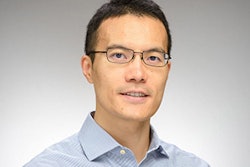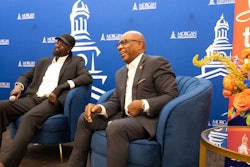 Dr. Marybeth Gasman, professor of higher education at the University of Pennsylvania and director of the Penn Center for Minority Serving Institutions, addresses more than 50 educators from across the globe at the “Students at the Margins and the Institutions that Serve Them: A Global Perspective” seminar held this week in Salzburg, Austria.
Dr. Marybeth Gasman, professor of higher education at the University of Pennsylvania and director of the Penn Center for Minority Serving Institutions, addresses more than 50 educators from across the globe at the “Students at the Margins and the Institutions that Serve Them: A Global Perspective” seminar held this week in Salzburg, Austria.
The five-day international seminar—the first of its kind—is appropriately titled “Students at the Margins and the Institutions that Service Them: A Global Perspective” and is the brainchild of Dr. Marybeth Gasman, a professor of higher education at the Graduate School of Education at the University of Pennsylvania and director of the Penn Center for Minority Serving Institutions.
“I thought, ‘Wow, wouldn’t it be amazing to get people to start talking about minority serving institutions or institutions that serve disenfranchised or underrepresented students in other countries,’” said Gasman, who had been planning the Salzburg Global Seminar for the past two years with support from the Educational Testing Center and the Kresge Foundation. “I also think it lifts the role of minority serving institutions in the United States when you think about them in a global way and oftentimes people think about them in a negative way and I would rather have them think, ‘Wow, maybe they’re ahead of the game.’”
While the racial term “minority serving institutions” (MSIs) is a federal designation used in the United States to identify colleges and universities that service a particular demographic, Gasman acknowledged that “the term doesn’t really carry meaning” in other places around the world.
Still, participants from countries as far away as China and South Africa told stories of a group of students who too often are disenfranchised or marginalized in their respective countries often because of their ethnic, racial or economic status.
“In the United States, the minority serving institutions are the ones serving a majority of the disenfranchised students,” said Gasman. “But in all of these other countries, I don’t think they think of their students as a minority.”
The marginalization of pockets of students throughout the world still remains a daunting challenge.















